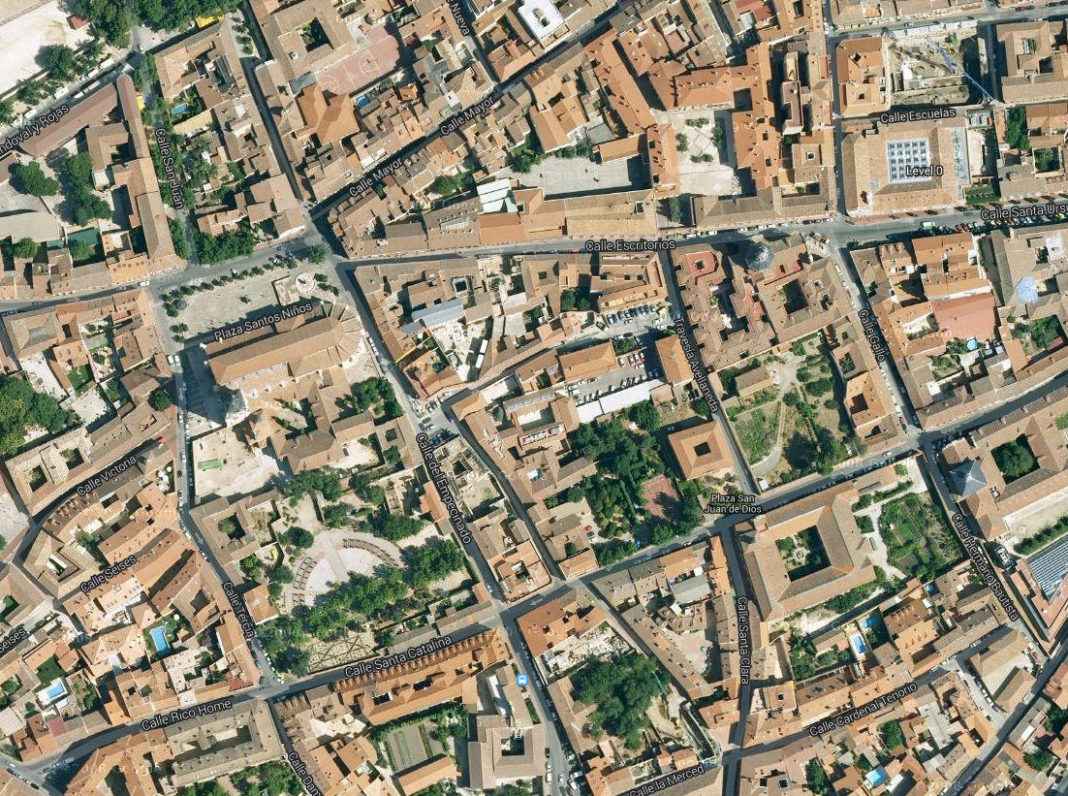Discover Alcalá de Henares physical characteristics, its distribution, street directory, number disposing and much more.
There are not greatest megalopolis spread across Spain—certainly nothing remotely similar to New York, Los Angeles, Mexico City or Tokio. Madrid—the biggest Spanish city—have around 3,233,527 inhabitants. Though Madrid is the sixth biggest city of Europe, at a worldwide level, its size or population is not especially relevant.
Alcalá de Henares, situated near Madrid, has an area of 87.72 km2 and about 200,000 inhabitants, being such figures at the same level as many Spanish provincial capitals. Therefore, in Spanish terms, Madrid is a middle size city with everything a metropolis could possibly offer and, however, it is still being easy to move from one place to another without need of losing all day in the car.
Historical Center, Modern Neighbors and Suburbs
As in most European cities, Spanish urban centers have in general a historical city core made up by small streets—almost a labyrinth—that have always been the liveliest part of the city. The center of the city—crowded at any time of day—is full of countless stores and restaurants whose crucial hours are comprised between 10 in the morning and 10 at night. Besides, the presence of pedestrian streets have become popular among narrow roads by which cars do not use to run anymore—sometimes even by a square, or a park—inviting visitors to have a peacefully walk.
The pedestrian street par excellence in Alcalá is calle Mayor, and the most important square is doubtless plaza de Cervantes.
The historical city center is, apart from the city’s commercial zone, where all small typical establishments and international clothes retail chain are placed. Even though during the last years several small enterprises have been forced to close by superstores and multinationals pressure; there are still being some centenary stores passed from generation to generation. And without a doubt, there are dozens of bars and restaurants where taste typical Tapas of Alcalá.
Around historical city centers, more actual and less crowded neighborhoods are commonly placed. Normally, such areas are far less frequented then the center, though depending on its distance from the city core, they could have plenty of life. People who live in suburbs and workers coming and going every day to their offices make possible the presence of stores and other services. In these neighborhoods, wider and straight streets favor the presence of a higher quantity of traffic.
Beyond suburbs near to center, the outskirts of the city hold endless office buildings, industrial states and big shopping centers. Some of the main neighborhoods of Alcalá’s extension are El ensanche (video), Espartales (video) and La Garena (video). All of them are modern areas with apartments, detached houses and plentiful landscaped areas.
Daily Life in Alcalá
In Spain, most people live in apartments instead of houses, placed among different neighborhoods into the city. Inhabitants of midsize cities as Alcalá usually prefer to walk or move around just by using public transport. There are much people who only drive their car when they have the necessity of going to another town or making big shopping. Anyway, remember that it does not mean that Spanish cities are out of traffic, there are lots of cars and traffic jams!
People who work and study near home use to travel walking, while longer journeys are made by public transport, mainly thanks to the urban bus network.
Walking by the center of a Spanish city as Alcalá is a nice experience, especially for people used to wide and interminable deserted streets that never end. Lots of historical city center streets such as calle Mayor has stone pavement and are full of old buildings, which immediately transport you back to a previous historical period. Besides, going everywhere walking or by bus is a great way to discover and know a city’s secrets.
Streets and Directions
In order to guide you by Alcalá, look carefully at the names of streets and the numbers of buildings. Streets names are never cold or meaningless abstractions, neither is numbering. Historical character names connected somehow to the city, or words related with activities that in the old days were practiced in such place name every road. For instance, into Alcalá city center the visitor may find streets as Cervantes, Manuel Azaña (Alcalá’s citizen illustrious for being president of the Second Spanish Republic), Goya or Quevedo; but also other with names such as Libreros, Colegios o Escritorios.
Streets numbering begins from the city center, meaning that number 1 is in the nearest end to city center. Besides, numbers are not correlative, visitors will see even numbers on one side of the city and odds at the other; so if street numbering begins with 1, it would be next to 3 and in front of 2.
If you are used to squared blocks and streets with numeral names, moving through the city might at first turn to be a little gossipy, but the truth is that most foreign visitors enjoy wandering around small central streets and discovering the surprises hidden in the most historical corners of Alcalá.
The tourist says:
Sigue disfrutando de Dream Alcalá:
- Telegram: Recibe nuestras noticias y contenido exclusivo (clic aquí).
- Newsletter: Recibe cada tarde un correo con nuestras últimas noticias (clic aquí).
- YouTube: Suscríbete para ver nuestros mejores vídeos (clic aquí).
 Sé tú el periodista: envíanos tus fotos o noticias a través de Telegram.
Sé tú el periodista: envíanos tus fotos o noticias a través de Telegram.

